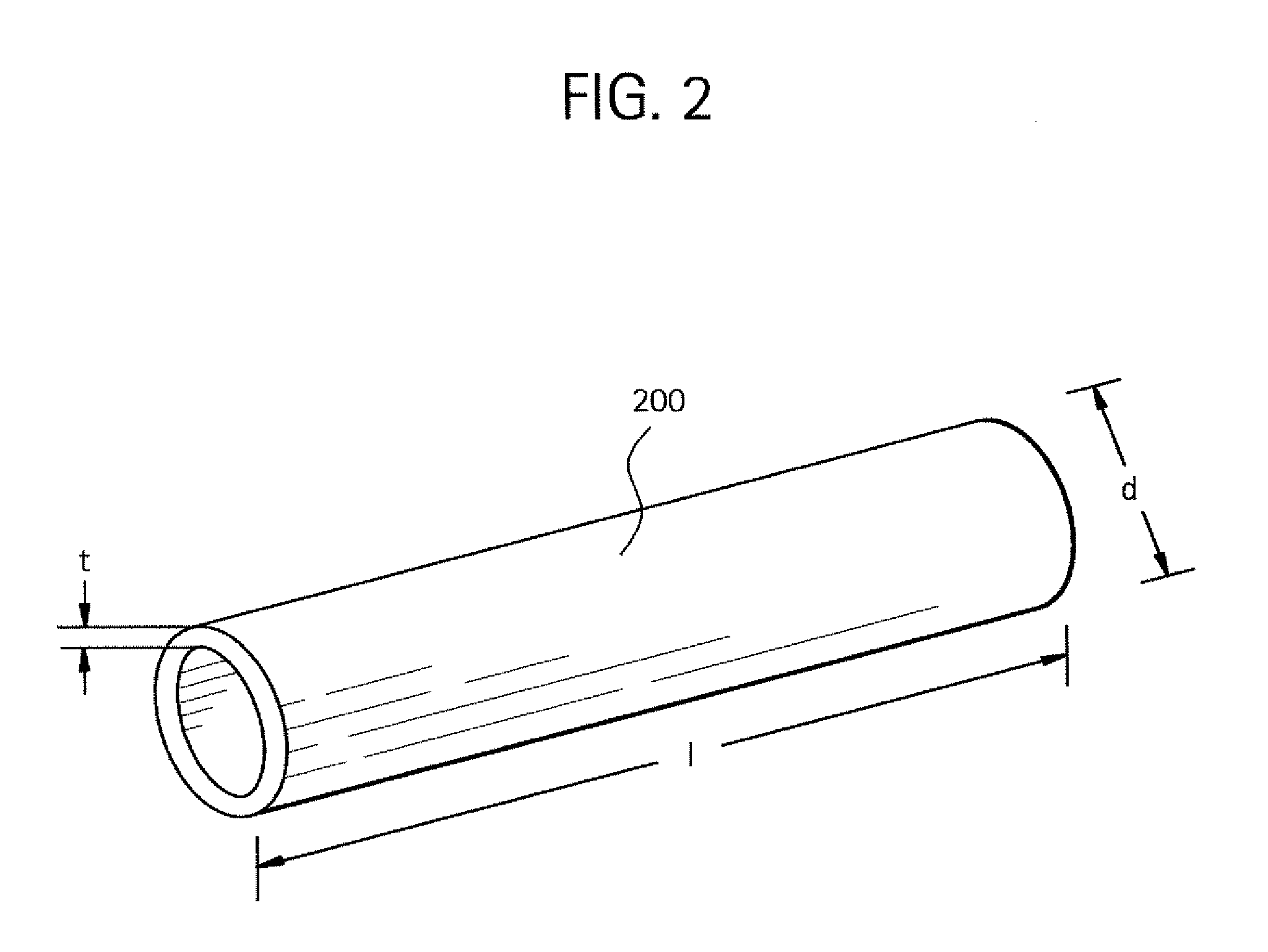Laser cut intraluminal medical devices
a technology of medical devices and laser beams, applied in the direction of prosthesis, manufacturing tools, blood vessels, etc., can solve the problems of compromising the physical properties of the materials comprising the stent, and achieve the effects of reducing or ideally eliminating the effects of moisture and oxygen, reducing the number of laser beams, and maintaining the consistency of laser beams
- Summary
- Abstract
- Description
- Claims
- Application Information
AI Technical Summary
Benefits of technology
Problems solved by technology
Method used
Image
Examples
Embodiment Construction
[0029]FIG. 1 illustrates a precursor sheet 100 of bioabsorbable material for forming an intraluminal medical device or stent according to the systems and methods of the invention. The precursor sheet 100 is produced from conventional compression molding or solvent casting techniques, for example, which are not further detailed herein as the artisan should readily appreciate how such precursor sheets 100 are formed using conventional techniques. The precursor sheet 100 is provided with length (l), width (w) and thickness (t) dimensions that may be varied from sheet to sheet in order to accommodate the formation of differently sized medical devices or stents. For example, where a longer anatomic vessel or passageway is the intended treatment site, then a longer length (l) dimension may be provided, or where increased radial strength is desirable, then a larger thickness (t) dimension may be provided. The precursor sheet 100 is comprised of bioabsorbable materials such as, for example,...
PUM
| Property | Measurement | Unit |
|---|---|---|
| inner diameter | aaaaa | aaaaa |
| length | aaaaa | aaaaa |
| length | aaaaa | aaaaa |
Abstract
Description
Claims
Application Information
 Login to View More
Login to View More - R&D
- Intellectual Property
- Life Sciences
- Materials
- Tech Scout
- Unparalleled Data Quality
- Higher Quality Content
- 60% Fewer Hallucinations
Browse by: Latest US Patents, China's latest patents, Technical Efficacy Thesaurus, Application Domain, Technology Topic, Popular Technical Reports.
© 2025 PatSnap. All rights reserved.Legal|Privacy policy|Modern Slavery Act Transparency Statement|Sitemap|About US| Contact US: help@patsnap.com



